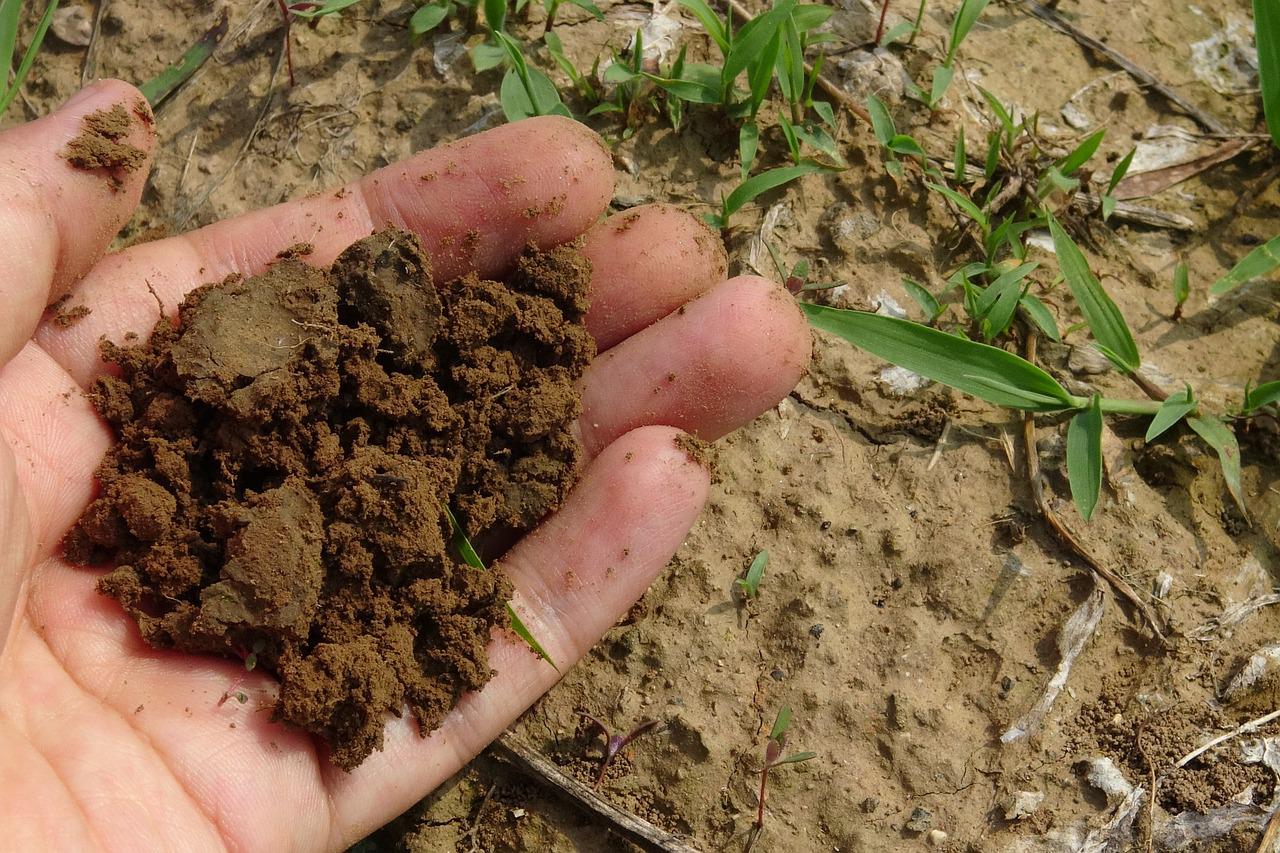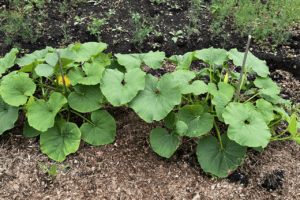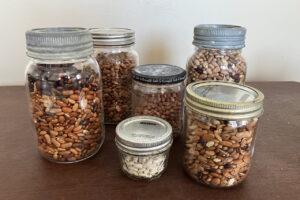Previously, I left you with this question: “How does a gardener, who knows soil is alive with so many creatures, look after the soil?”
Generally, gardeners care for the physical needs of soil life as we care for our own. We try to provide good food, water, oxygen, and soil conditions that are not too hot or too cold.
In an undisturbed forest or prairie ecosystem, all the life forms work together to provide the essentials throughout the whole web in an elegantly balanced way. For a well-established, mulched shrub or perennial border, the plants should also develop a healthy ecosystem if not disturbed regularly. In an annual flower or vegetable garden, the gardener disturbs the balance in that ecosystem every year. She cuts off the solar energy-capturing leaves of this system; disturbs the fungal thread networks when digging or turning the soil to plant or pull up annuals; and removes large amounts of future food in all the plant matter during the garden’s annual cleanup.
From the point-of-view of the soil organisms and their basic physical needs, a gardener can employ the following practices to make up for this intrusion:
- Food (for ornamental and edible annual beds): Once a year, top dress the soil surface with a thin layer of compost (up to 1 inch/2-3 cm deep) that the soil organisms can move lower into the soil. Leave healthy plant material in the garden in the fall to decompose. If removing this plant material, cut the dead plants off at the soil surface and leave the root systems in the soil. Avoid using inorganic, water-soluble fertilizers which provide a short-term meal for plants, no food for the soil food web, and leave salts behind.
- Water: Ensure that there is always some moisture in the soil. Maintain a 4-6 in./10-15 cm layer of organic1 materials on the soil surface to reduce evaporation. This “mulch”2 eventually breaks down and increases the organic matter in the soil, improving the ability of soil to hold moisture too. Straw, untreated dried grass, or shredded leaves are good choices for annual flower and vegetable beds. Arborist wood chips are the “gold standard” for tree and shrub borders.
- Air: Adding organic matter, as described above, also helps to maintain air spaces in the soil. Walk only on paths around the garden beds to avoid compacting the soil which removes many air spaces. This is especially important when our gardens are wet.
- Comfortable Soil Temperature: A good mulch layer will moderate the soil temperature during the heat of summer and provide some insulation to the soil in winter. Soil microorganisms go dormant for the coldest months on the Canadian Prairies, but this insulating coat can reduce compaction of soil during early spring downpours and provide a home for some of the larger soil food web organisms like the anthropods.
The thin layer of soil, existing between the bedrock below it and the air above, is home to an unseen “workforce” that is critical for life on earth. There are life-sustaining relationships between these soil organisms, the plants that grow in their midst and our own human species. Undisturbed forests and grasslands show us that these soil organisms and plants can manage well without our presence, but we will not survive long without these tiniest of friends.
1 The word “organic” used in this context means any matter that comes from something that is or was alive.
2 For more information on mulch and types of materials to use, see the following online brochure at: https://gardening.usask.ca/documents/healthy-yards-pdfs/brochure_healthy_yards_mulch.pdf
Wendy spent a good part of her adult life moving with her husband, never staying long enough to see an apple tree mature and bear fruit. When they retired, developing a food garden and planting hardy ornamentals became a passion. Weaving her previous studies in nutrition with her current interest in gardening has become a stimulating and life-giving activity.





Reading your reflection, gardening comes into focus as such a collaborative enterprise – even a dance – to which everything contributes, and in which everything can flourish. Including the gardener.
I read Parts I and II of your reflection with great interest, Wendy, and appreciated the reminder to think of soil as a living entity. Your perspective on caring for soil in order to “make up for” intrusive disturbances was an eye-opener for me.
This past week, too, I read an article by Sadhguru in a TIME issue (Jun 6/ Jun 13, 2022) on “soil extinction,” that “an acre of soil in the world is turning into desert every second” due to unsustainable agricultural practices. Sadhguru writes that “addressing soil could alleviate many other ecological issues…” and that it is one of the most urgent needs of our time.
Thank you, Wendy, for sharing some practical ways to care for soil life.
Thank you Wendy. How wonderfully informative your blogs are for me. Thank you in particular for highlighting the importance of a mulch layer.